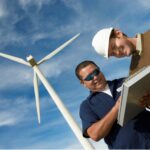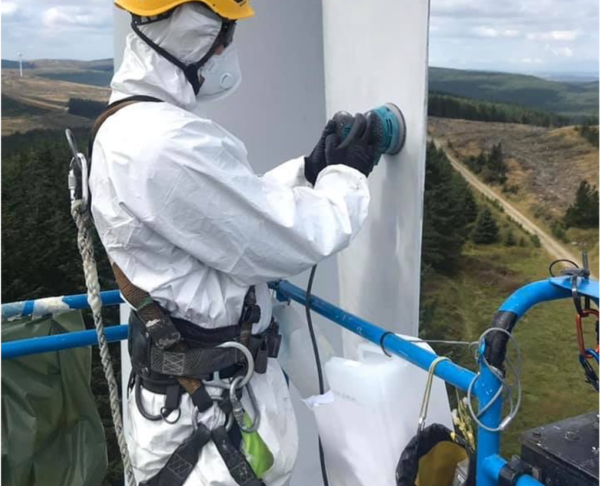Humanity is slowly becoming a type-one civilization and at the same time moving away from energy obtained through processed crude oils. Instead, we’re rapidly learning to utilize renewable energy sources such as solar energy, hydropower, and of course, wind energy.
More and more wind turbine farms are being built all over the world — especially in Asia — and they require qualified technicians for inspection, maintenance, and repairs. We are proud to be contributing to this new phase of human energy technology — “the energy transition” — by being the only Asian company currently training and equipping individuals with the skills they need to keep these wind farms productive. Adequate knowledge for blade repair services is an essential aspect of this training.
Blade Repair Training and the Repair Process
Currently, there exists a simple yet concrete procedure for each step of the repair process, from inspection to completion, but with technology advancing rapidly across Asia, the process varies from context to context. We aim to teach the key concepts of Blade Repair training so that technicians in the field are able to understand and complete even the most complicated repair projects.
Safety Training
Safety is the first, second, and third priority in blade repair. Our Blade Repair training consists of multiple safety training modules that are taught and retaught, for consistent and up-to-date competence.
Safe work at heights requires theoretical and practical training, as well as core strength and mental focus. In our Working at Height and Manual Handling courses, we encourage delegates to execute tasks safely only after thorough planning. The course teaches manual handling, use of personal protective equipment, and height rescue, ensuring individuals are thoroughly prepared for the unique risk situations that occur on blade repair jobs.
Similarly, our First Aid training aims to enable repair technicians to perform cardiopulmonary resuscitation (CPR) and use an automated external defibrillator (AED). In accordance with First Aid training, this course ensures that individuals are able to perform the first aid necessary for any emergency situation that may arise working in the wind turbine industry.
Once the key concept of safety has been internalized, trainees need to get to grips quickly with the technical competencies of blade repair. This includes training in the use of specialized technical equipment.
Wind Turbine Blade Inspection
Visual inspection is a key part of the process in blade inspection, repair, and maintenance. A regular blade inspection can be completed using rope access techniques, a camera with a telescopic lens of at least 400mm, or powerful binoculars.
However, Drone inspection is a much better alternative, since certain inspections cannot be completed from the outside only, requiring a technician to climb inside and physically enter the turbine blade unless a drone is used instead. Drones can also be equipped with digital and thermographic cameras, reducing downtime and increasing efficiency. Additionally, a drone can hover in place and withstand wind speeds of up to 10 m/s, making them more than useful for onshore and offshore wind turbine inspection.
Trainees on our wind turbine repair training courses will first and foremost receive training in simpler inspection methods, including rope access techniques for close-up visual inspections and blade sanding techniques for detailed visual inspections.
Wind Turbine Blade Repair
Once any damage has been identified, technicians need to know how to implement repairs in the field. This is the process known as wind turbine section creation. Completing the same processes utilized by factories that produce blades, technicians use specialized techniques to repair damage caused by weather, lightning strikes, stress, and other factors.
Critically, this process includes many practical and theoretical elements that simply cannot be learned alone; real competence requires in-person teaching with experienced personnel. The final step of our wind turbine repair training, recognized by Siemens Gamesa, therefore teaches trainees through hands-on practice how to repair the blade surface and return it to its most effective aerodynamic motion.
Grit, rain, snow, lightning, and even bullets are the primary causes of wind turbine blade damage. The turbine blade tip can spin at 200 miles per hour. At these speeds, something as simple as a drop of rain can have the impact of a stone, and particles of sand and stone create blade surface damage very quickly. Caused by these natural occurrences are laminate damage, coat damage, and erosion.
Erosion damage repairs are completed by a skilled rope-technique technician on the spot. The technician utilizes epoxy filler paste, urethane, or tape to fix the erosion. Most often, epoxy filler paste is the best option, since it creates the most aerodynamic surface.
Severe damage that is more difficult to repair requires a blade repair technician of a higher skill level. Not only does the technician have to sand the layers correctly, but he must understand every material used in the construction of the blade. If the technician at hand doesn’t have the necessary knowledge, the laid-up composite will likely peel off after a short period, resulting in even more damage.
The goal of blade repair training in Asia is to gradually prepare trainees to move from fixing simple cosmetic damage to undertaking repair of the most serious blade damage.
Building The Future
For the highest competence and compliance, it’s important to rely on training that is certified to the highest standards. This includes blade repair training offshore in Thailand, Vietnam, Australia, New Zealand, Japan, India, China, and Taiwan, making us the only such source in Asia.
We came to Asia with the aim of training individuals to perform generic, widely utilized techniques, but also leaving them with the knowledge to operate the newest blade inspection technologies.
In association with K2 Energy Group, Advanced Blade Repair Services Asia has successfully trained a vast number of students in Europe, who are by now veteran technicians.
Asia is a new continent full of bright, determined individuals, and we’re excited to be the first company to offer them the opportunity to be the builders and repairers of a clean, wind-powered, future.
Contact us, begin your training, and leave your mark!


